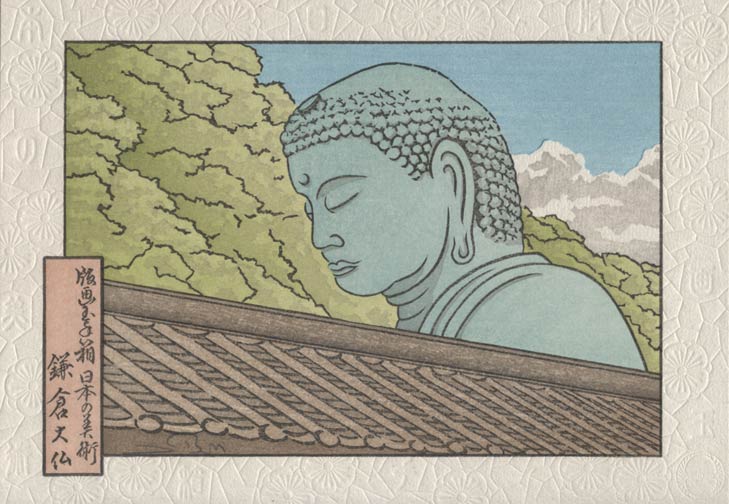

Kamakura Daibutsu
The design is based on a small snapshot view of the statue, which triggered a memory of the day that Dave first saw it ...
(click anywhere to close)
Kamakura Daibutsu
When I was first organizing my thoughts for this ‘The Arts of Japan’ series, one idea that came to mind was to introduce the topics in order of size - begin with something very small, and end with something ... just like this, which will indeed probably be the largest object we will include in the set!
I first saw the great Daibutsu on my very first trip to Japan, back in 1981. A group of us had made the trip to Kamakura on a beautiful winter day, and - as has always been my habit - we walked the back streets from the train station towards the temple where the statue lives.
And the scene you see here is very similar to the way that we caught our first glimpse of it, off in the distance, with just the head poking up above the surrounding walls. “There it is!” Seeing it that way increased our sense of excitement, and perhaps we were able to feel just a little of the same anticipation that pilgrims of old must have felt as they finally drew near to the statue after a long journey.
The statue has been there for many hundreds of years, and has seen much history. It used to be housed inside a temple, but the surrounding building was washed away in a tsunami. After having seen the images from Tohoku last year, all of us can now easily picture that event in our mind’s eye, with the waters rising and swirling around the base of the Buddha, eventually causing the walls and roof of the building to collapse around it. As the debris then washed back out to sea, the statue was left standing in the open air.
I am filled with awe at the ability of very ‘small’ men to build an object of such complexity and intrinsic beauty, especially when one considers the very rudimentary nature of the tools they had available. One can only imagine their feelings when it was finished!
David
(Click to close)